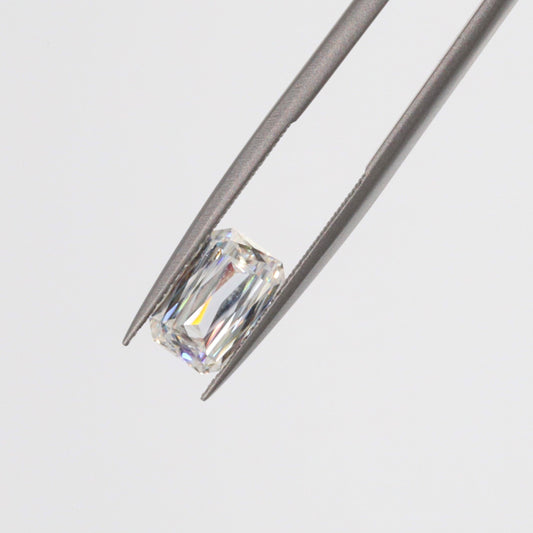Choosing a piece of jewelry can be an overwhelming experience, especially when it comes to engagement rings or wedding bands. This is especially true as you want the ring to be just as unique as the person wearing it. As if this isn’t tough enough, one still has to go through the process of finding the right gemstone for their style and budget.
If diamonds are your chosen gemstone, you know they vary in color, cut, clarity, and various other characteristics. Buying one can be a mind-boggling experience. With that in mind, we’ve created this guide on diamond classification to help.
What is Diamond Grading?
No two diamonds are the same. Thus, when evaluating a diamond’s qualities, including its rarity and value, jewelry professionals use a system developed by the Gemological Institute of America (GIA) in the 50s. The GIA diamond grading chart uses four main characteristics to describe and classify diamonds: Clarity, color, cut, and carat weight. The rock’s value is based on a combination of factors as diamonds with certain qualities are rarer—and more valuable.
Another system used is the AGS 0-10 scale, where the grades of a diamond are written in a specific order. Diamond cut grade comes first, followed by color, clarity, then carat weight. For example, if a diamond were colorless, free of inclusions and blemishes, and weighed one carat, it would be written as 0/0/0–1.000 carat. Many people have heard about the “4Cs” of diamond grading but don’t really know how they influence a diamond’s value. Let’s break it down.
Cut
The cut of a diamond significantly affects its beauty, as a well-finished stone is more dazzling. This is because the proportions of a diamond—how it has been cut—determine the way light will be dispersed when it goes through it. Because the gems are cut from rough stone, the cutter must make sure to get the best cut against maximum yield (carat weight).
The best cut optimizes three optical effects: Brightness, which is the white light reflection; fire, which are the flashes of color in the rock; and scintillation, which refers to the areas of light and dark.
Diamond ratings also look at the pattern: the relative size, arrangement, and contrast of bright and dark areas. Contrast is important as it gives the diamond’s pattern a crisp, sharp look.
Color
Though pink, blue, and yellow diamonds are prized, the amount of yellow tint in a clear diamond is used to determine its value. A chemically pure and structurally perfect diamond has no hue, making it of higher value than those with some tint.
The GIA diamond color and clarity chart ranks white diamonds through a D-to-Z color-grading system, where D is colorless, and Z is a light color. Diamonds with an IJ rating fall into the second-best color tier, which is nearly colorless. True colored diamonds are graded on a separate color scale.
The distinctions in white diamonds are hardly noticeable by the untrained eye. However, low-grade diamonds with a color rating of S-Z appear yellow to the naked eye. The larger the diamond, the more perceivable the color.
Clarity
Because they are naturally formed, all diamonds contain some imperfections that may affect a diamond’s appearance. Internal features are called inclusions, while surface irregularities are referred to as blemishes. The clarity in a diamond is measured by the relative absence of both inclusions and blemishes.
Other imperfections may occur when mineral crystals or smaller diamonds are trapped inside the larger rock as it forms. These may negatively or positively affect the value of a diamond.
A flawless diamond has no inclusions or blemishes on the GIA scale that can be seen by a skilled grader using 10x magnification. The rating ranges from I2-I3, what people mistakenly refer to as a diamond clarity 12 13 scale. Because inclusions are hardly noticeable without a microscope, color affects a diamond’s value more than clarity does. Thus, a Z color hi clarity 12 13 diamond is not considered as valuable as a white diamond with low clarity.
Carat Weight
Most people think of a carat as a measure of size, but it is actually a unit of weight. A higher carat weight does not necessarily indicate a larger diamond. Also, two diamonds of the same shape and carat weight may still appear different in size based on how they are cut. Because of this, a question like, “how big is a 7/8 carat diamond?” would have many different answers due to variations in shape.
Abbreviated “ct,” today one metric carat is two-tenths (0.2) of a gram. Large diamonds are rarer than small diamonds, and because of this, a diamond's value increases at an increasing rate. This means that a larger stone does not just cost more in total, it also costs more per carat. So, though 1 10-carat diamond may weigh the same as 10 1-carat diamonds, it is valued more than the sum of the 10 smaller diamonds.
The Perfect Alternative
If you’re looking for brilliance, clarity, and zero color in your gemstone, such diamond ratings may not be the most practical for your pocket. That’s why we suggest moissanite. As the world’s most brilliant gemstone, choosing moissanite instead of a diamond may be the right choice for you. Gema & Co prides itself on selling moissanite jewelry of the highest quality. Check out our moissanite jewelry collection today or contact us to learn more.




